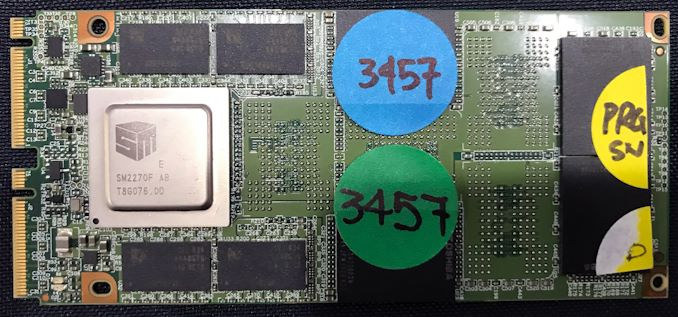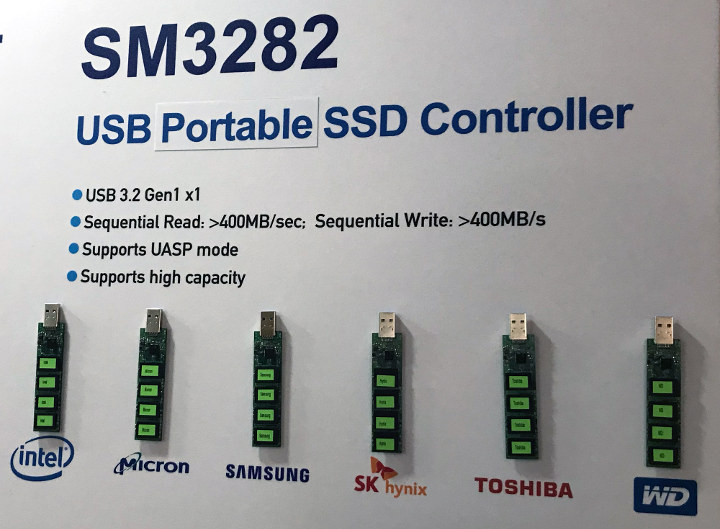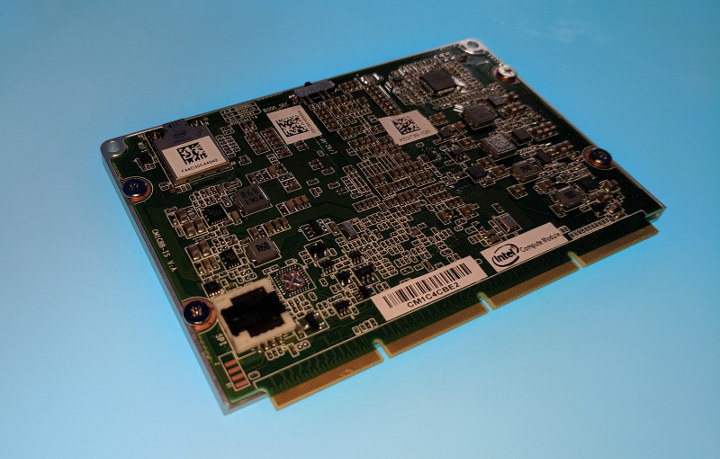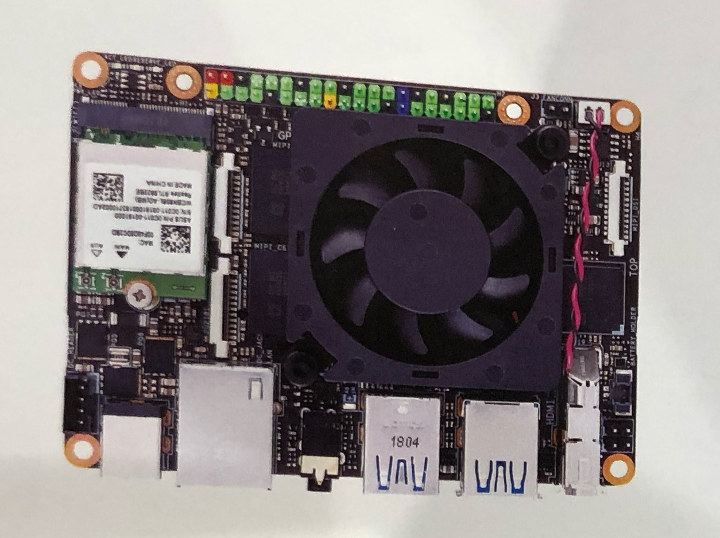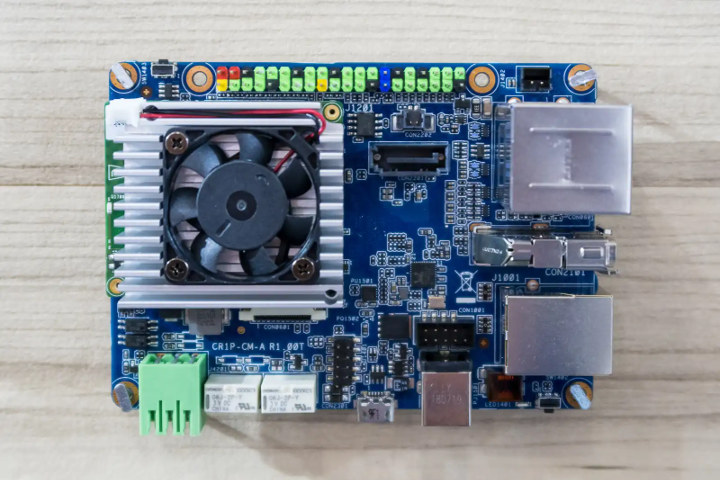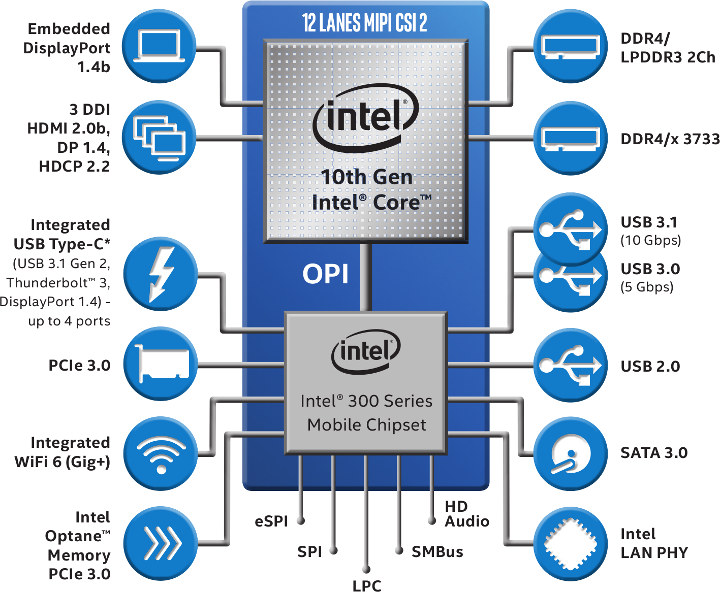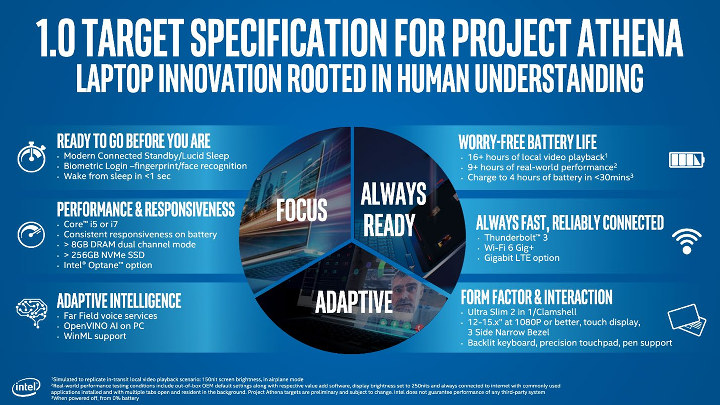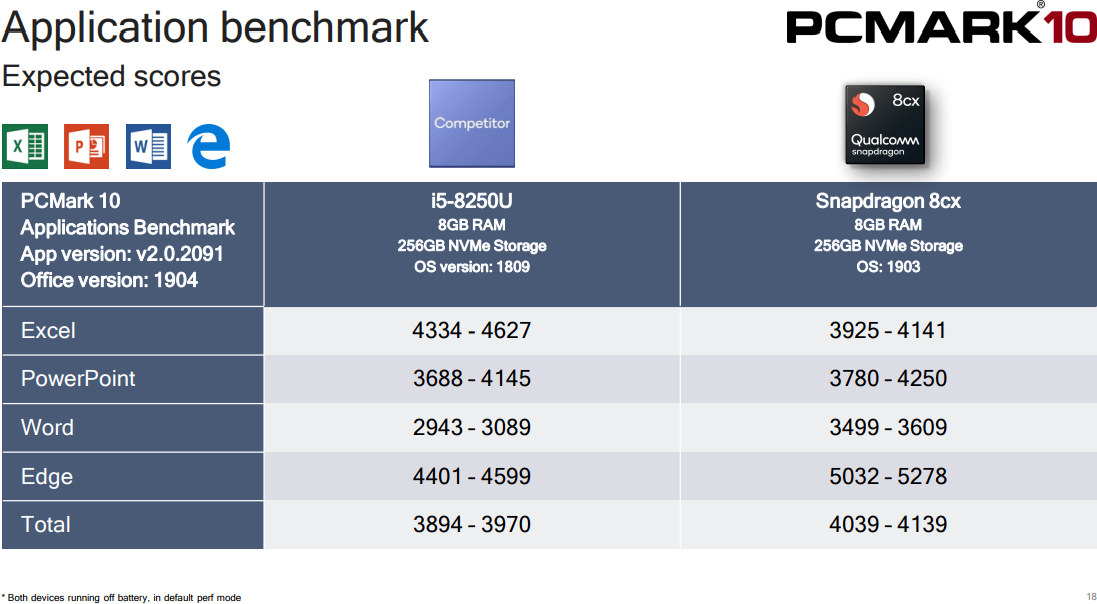M.2 SSD’s are now pretty common and rely on either SATA or PCIe interface, but apparently there’s a new form factor with an M.4 SSD showcased at the recent Computex 2019 exhibition, and with Silicon Motion SM2270 controller leveraging a PCIe 3.0 x8 interface for up to 3,200 MB/s sustained sequential reads, 2,800 MB/s sustained sequential writes, as well as up to 800K/200K IOPS for respectively 4K read/write random operations. Spotted by Anandtech at the event, Agylstor’s M.4 NVMe SSD come with the following specifications: Silicon Motion SM2270 controller with a three dual-core Arm Cortex-R5 processors with 2KB LDPC error correction and 16 NAND channels with 8 CE per channel (128 CE in total) Host Interface – PCIe Gen3 x8 Command Protocol – NVMe 1.3 Max Capacity – 16TB Anandtech explains the M.4 SSD is essentially two M.2 SSDs glued together with (8) NAND packages on each side of the […]
Silicon Motion SM3282 is a Single Chip Solution for Portable USB SSD Sticks
Portable USB SSD drives are nothing new, but they are usually implemented using a stand-alone SSD with its own SSD controller combined with a USB to SATA or PCIe bridge chip in order to interface the SSD drive with the host computer or board. Silicon Motion has recently unveiled SM3282 SSD controller that also comes with an on-chip USB 3.2 Gen 1 interface providing a complete single-chip hardware and software solution for portable USB SSD sticks. This should enable smaller and cheaper USB SSD drives. Some of the key features of the SM3282 controller include: Peak sequential read and write transfer speeds of over 400MB/sec Supports USB 3.2 Gen 1 type A and type C Crystal-less design for bill-of-materials cost savings Built-in 3.3V/2.5V/1.8V/1.2V voltage regulators Supports LED for indicating access status 68-pin QFN package Compatible with Windows 10, Mac OS 10.x and Linux kernel v2.4 and greater The chip also […]
Intel NUC Compute Element Merges Compute Card and Computer-on-Module Benefits
Intel unveils the Compute Card at CES 2017. The business-card-sized module was supposed to allow for easy upgrades or repairs of modular computers by inserting the Computer Card in a proprietary socket without having to open the computer or device. Linuxium posted a review of the Compute Card and dock back in 2018, and noted that while performance was good, the price was really excessive for most applications. The Intel Compute Card was eventually discontinued, and an article on PCMag does confirm one of the reasons was price: According to the Intel rep we spoke with, that sealed design and extra durability added nominally to the card cost but about $50 to each unit on the OEM side to incorporate the module, which stunted its adoption. The Compute Card was easy to insert and replace, but OEM’s have long had another option for upgrades: Computer-on-Modules. In x86’s world, this often […]
ASUS Tinker Edge R Pico-ITX Board to Feature Rockchip RK3399Pro SoC
Just a few days ago, we wrote about ASUS Tinker Edge T board and other products from ASUS featuring Google Coral Edge TPU which were showcased at Computex 2019. It turns out the company is working on another Tinker with a processor featuring an neural network accelerator. Meet ASUS Tinker Edge R Pico-ITX SBC powered by Rockchip RK3399Pro hexa-core processor equipped with a 3.0 TOPS NPU. One of the reasons it did not get noticed is that ASUS may not have had a sample for display at the event, but instead only described the board in a brochure. [Update: ASUS Tinker Edge R was also showcased at Computex 2019] ASUS Tinker Edge R SBC preliminary specifications: SoC – Rochchip RK3399Pro hexa-core big.LITTLE processor with 2x Cortex A72 cores up to 1.8 GHz, 4x Cortex A53 cores @ 1.4 GHz, an Arm Mali-T860 MP4 GPU up to 800 MHz with OpenGL […]
ASUS Tinker Edge T & CR1S-CM-A SBC to Feature Google Coral Edge TPU & NXP i.MX 8M Processor
A few months ago, Google introduced its Coral development board and USB accelerator powered by their Edge TPU delivering up to 4 TOPS and optimized for Tensorflow Lite. ASUS and Google have now partnered to bring more solutions powered by Coral Edge TPU namely ASUS Tinker Edge T board for makers and hobbyists, CR1S-CM-A SBC for industrial projects, and even a full computer fitted with a Google Edge TPU PCIe card. ASUS Tinker Edge T ASUS Tinker Edge T preliminary specifications: SoC – NXP i.MX 8M quad-core Arm Cortex-A53 processor with Arm Cortex-M4F real-time core, GC7000 Lite 3D GPU ML accelerator – Google Edge TPU co-processor System Memory – 1GB LPDDR4 RAM Storage – 8 GB eMMC flash Connectivity – Gigabit Ethernet port, Wi-Fi 2×2 MIMO (802.11b/g/n/ac 2.4/5GHz), and Bluetooth 4.1 Video Output – MIPI DSI connector, and HDMI output Camera I/F – 2x MIPI CSI 2 interfaces for stereoscopic […]
9W Intel Ice Lake Y-Series Processors Coming with Gen11 Graphics, 10nm Process
Intel has provided a few more details about their upcoming Intel Ice Lake Y-Series processor that will succeed their Amber Lake Y-Series family comprised of Core m, and Core i5/i7 processors with 5W to 7W TDP. Ice Lake Y-Series processor will come with the latest Intel Gen11 graphics with up to 64 EU (Execution Units), have a higher 9W TDP, configurable up to 12 Watts, and be manufactured with Intel’s 10nm process. Highlights of Intel Ice Lake Y-Series processors: CPU – 10nm+ quad-core processor, 14nm Platform Controller Hub (PCH ) GPU – Gen 11 Intel Graphics Engine, up to 64 EUs; Open GL 4.5, DirectX 12, and OpenCL 2.2 API support AI – Intel GNA (Gaussian Network Accelerator) Memory I/F – LPDDR4/x-3733 Camera – IPU4p: 16MP, 4K30, 4x cameras, RGB+IR camera Video Output eDP 1.4b up to 4K120/5K60 (10-bit) resolution DisplayPort 1.4 up to 4K120/5K60 (10-bit) resolution HDMI 2.0b up […]
Project Athena Specification 1.0 – Fast Response Times and Long Battery Life
Project Athena innovation program aims to provide a set of guidelines for Windows or Chrome OS always-on always-connected laptop powered by Intel processor. At the time of the first announcement at CES 2019 few details were provided, but Intel has now released Project Athena 1.0 target specification which gives clearer details of what such laptops will have to offer. Intel also introduced new “key experience indicators” (KEI) aligned with real-world conditions in order to provide to best experience to end-users. Project Athena 1.0 target specification defines six key areas of innovation: Instant Action – Modern Connected Standby and Lucid Sleep (feature of Chrome OS) features implement fast wake with a simple lid-lift, push of a button or quick fingerprint recognition. System wake from sleep must occur in less than 1 second Performance and Responsiveness – Systems based on Intel Core i5 or i7 processors with Intel Dynamic Tuning Technology, a […]
Lenovo Project Limitless 5G Laptop and Snapdragon 8cx Benchmarks
Last December, Qualcomm unveiled Snapdragon 8cx processor for laptops, or as the company calls them “always-on always connected mobile PCs”. Only 4G LTE was mentioned at the time, but a few months later it was confirmed that the processor would find its way into 5G always-connected mobile PCs. Qualcomm made two main announcements at Computex 2019 about their new Arm processor for laptops. First, they announced a partnership with Lenovo for Project Limitless, the first 5G PC powered by the Qualcomm Snapdragon 8cx 5G compute platform, and the company released some benchmarks to demonstrate the high performance and long battery life of their solution. Lenovo Project Limitless 5G Laptop The press release did not reveal that much information, but we do know Project Limitless features Qualcomm Snapdragon 8C 5G compute platform with Snapdragon X55 5G modem enabling download speed of up to 2.5 Gbps, and it will be the first […]


